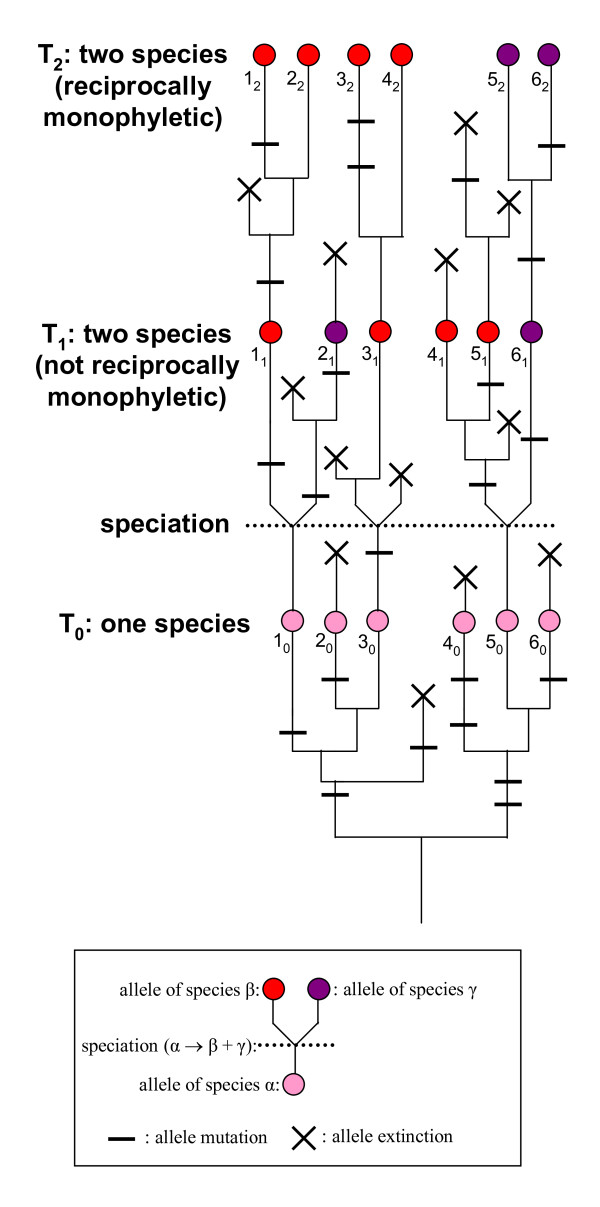Figure 1.
Mutual exclusivity vs. reciprocal monophyly. To illustrate the concepts of mutual exclusivity and reciprocal monophyly, let us visualize how the alleles in a gene tree are distributed at the various stages of the process of speciation. Unless the genetic polymorphism of the ancestor species is very low (for instance following a strong bottleneck event), sequencing at T0 any variable marker from a number of individuals of this species would yield a diversity of sequences (haplotypes 10 to 60, in pink). Following speciation, the two resulting sister species inherit the polymorphism of their common ancestor and are thus initially indistinguishable, but their sequences immediately start to diverge as some haplotype lineages get extinct through genetic drift (lineage sorting) while others accumulate mutations. If effective population sizes are large, genetic drift acts more slowly than mutations: in such case, the two sister species become genetically distinguishable at T1 when their sets of sequences are mutually exclusive (haplotypes 11, 31, 41, 51 in red, haplotypes 21 and 61 in blue), i.e. the two species do not share any sequence; reciprocal monophyly is reached at a later stage (T2, haplotypes 12 to 62), or may theoretically never be reached if the effective population size is infinite. In all cases, mutual exclusivity is reached before or at the same time as reciprocal monophyly: hence, mutual exclusivity is a more powerful and sensitive criterion than reciprocal monophyly to delineate species.

